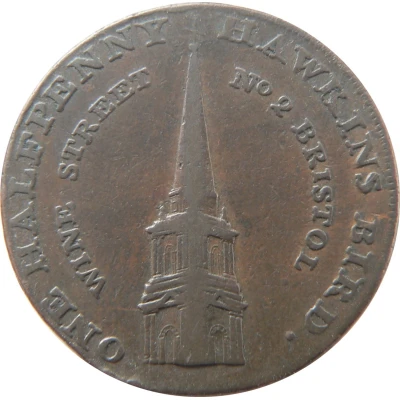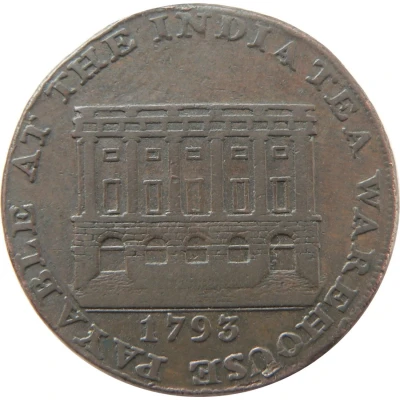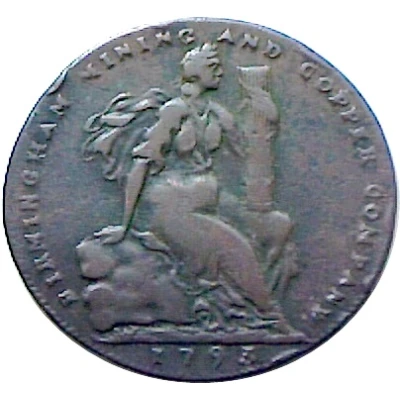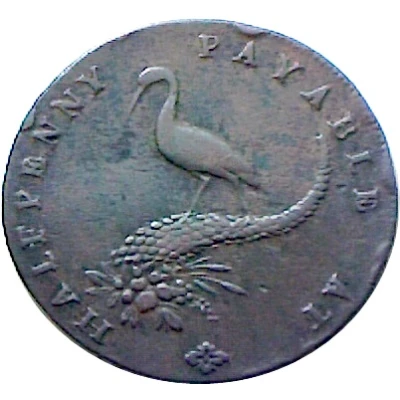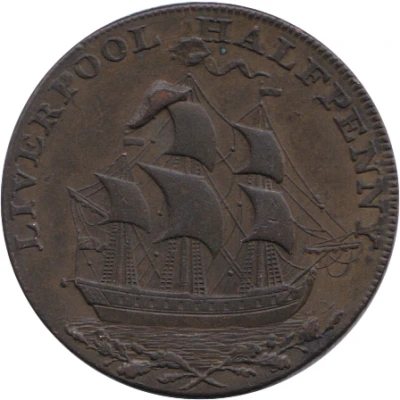


© Timbrimi
½ Penny Lancashire - Liverpool / Sailing Ship
1793 year| Copper | 11.2 g | 28.3 mm |
| Issuer | United Kingdom (United Kingdom, British Overseas Territories and Crown Dependencies) |
|---|---|
| Type | Token |
| Year | 1793 |
| Value | ½ Penny (1⁄480) |
| Currency | Conder tokens (1787-1797) |
| Composition | Copper |
| Weight | 11.2 g |
| Diameter | 28.3 mm |
| Thickness | 2.1 mm |
| Shape | Round |
| Technique | Milled |
| Orientation | Coin alignment ↑↓ |
| Demonetized | Yes |
| Updated | 2024-10-09 |
| Numista | N#236823 |
|---|---|
| Rarity index | 94% |
Reverse
Coat of Arms of the city of Liverpool (a cormorant in shield surmounted by another, both holding seaweed in beaks, with bulrushes either side), divided date below.
Script: Latin
Lettering:
DEUS NOBIS HÆC OTIA FECIT.
17 93
Translation: God has bestowed these blessings on us
Engraver: John Gregory Hancock
Edge
Incuse lettering
Note: varieties exist
Lettering: PAYABLE IN ANGLESEY LONDON OR LIVERPOOL.
Comment
The Latin quote on the reverse is attributed to the ancient Roman poet known as Publius Virgil Maro, or Virgil. This quote and the Liver bird is featured on the Liverpool coat of arms.This variety of the Liverpool Sailing Ship Halfpenny token has several features: on the obverse, the lower sail on the mainmast is fully deployed, at the bottom there is a wreath of oak branches. On the reverse, the inner outline of the shield is drawn with a solid line.
Almost all tokens of this type have several of the same type of coinage defects on the obverse. The Dalton & Hamer catalog contains an image of just such a token with defects. Probably the coin stamp was damaged during the minting process. Several mule tokens DH # 115, DH # 116, DH # 117 were minted from the same damaged obverse die.
Charles Pye's catalog "A Correct and Complete Representation of all the Provincial Copper Coins, Tokens of Trade, and Cards of Address, on Copper, Which were circulated as such between the Years 1787 and 1801, when they were entirely superseded; a new copper coinage being at that time in circulation, issued by authority of government", printed in 1801, contains information about the die engravers and minting master. The weight of the produced tokens is also indicated there - 5 cwt. Taking the average weight of one token for 11.5 grams, we can calculate the approximate circulation of 22,100 pieces.
Interesting fact
One interesting fact about the Token ½ Penny (Lancashire - Liverpool / Sailing Ship) 1793 from United Kingdom is that it was issued during a time of severe currency shortages in the late 18th century. The coin was minted by a private company, the Liverpool Token Company, and was used as a substitute for the official British coinage. The coin's design features a sailing ship on the obverse and the value "1/2 Penny" on the reverse. Despite being made of copper, the coin was not officially recognized by the British government and was eventually demonetized in 1811. Today, the Token ½ Penny is a highly sought-after collector's item among numismatists.
